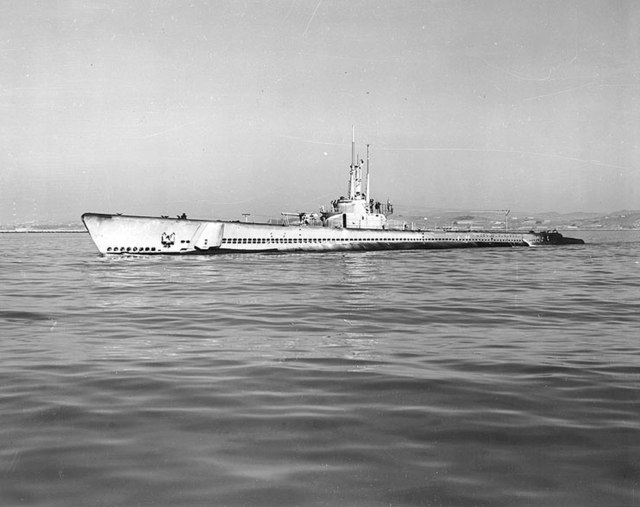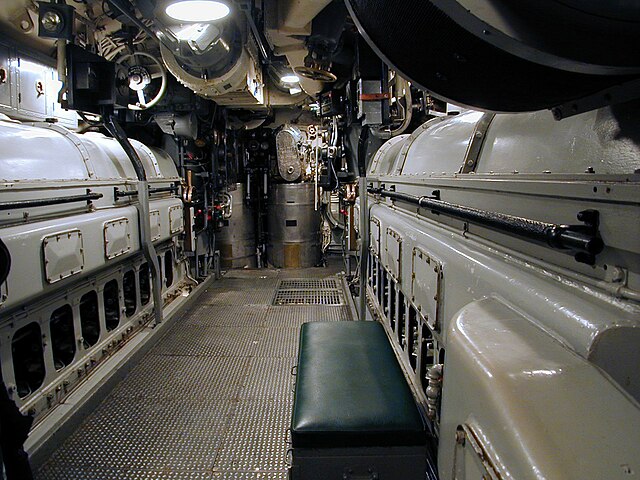Rear Admiral Andrew I. McKee was a pioneer in modern submarine design and development. The destroyer USS Schenck was named for his maternal great-grandfather, Admiral James F. Schenck. McKee graduated from the United States Naval Academy at the top of his class in navigation and was commissioned an ensign in March 1917. He served with USS Huntington until he severely injured both legs in a fall from the mast in August 1917. He was declared unfit for sea duty, and assigned first to the Naval Academy as a navigation and physics instructor, and then as the supervisory naval constructor at Bethlehem Steel Corporation Fore River Shipyard in Quincy, Massachusetts, pending admission to the Massachusetts Institute of Technology (MIT). In 1921 he received a master's degree in naval architecture from MIT, and was assigned to the Navy Construction Corps.
McKee while a commodore in the US Navy
The Balao class was a design of United States Navy submarine used during World War II, and with 120 boats completed, the largest class of submarines in the United States Navy. An improvement on the earlier Gato class, the boats had slight internal differences. The most significant improvement was the use of thicker, higher yield strength steel in the pressure hull skins and frames, which increased their test depth to 400 feet (120 m). Tang actually achieved a depth of 612 ft (187 m) during a test dive,
and exceeded that test depth when taking on water in the forward torpedo room while evading a destroyer.
USS Balao in 1944
Scheme of USS Pampanito (SS-383)
General Motors Cleveland Model 16-248 diesel engine
Fairbanks-Morse Model 38D8⅛ diesel engine





